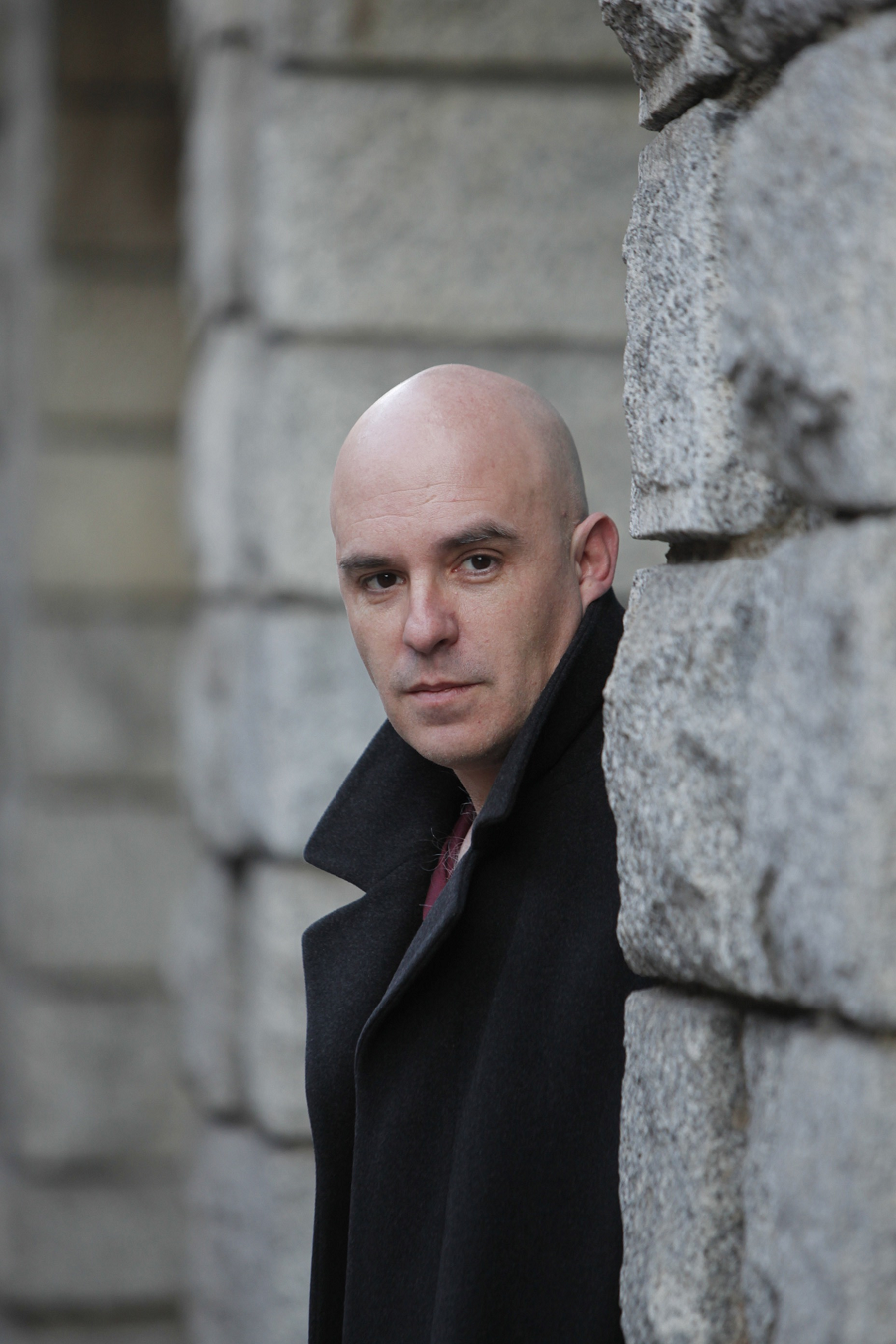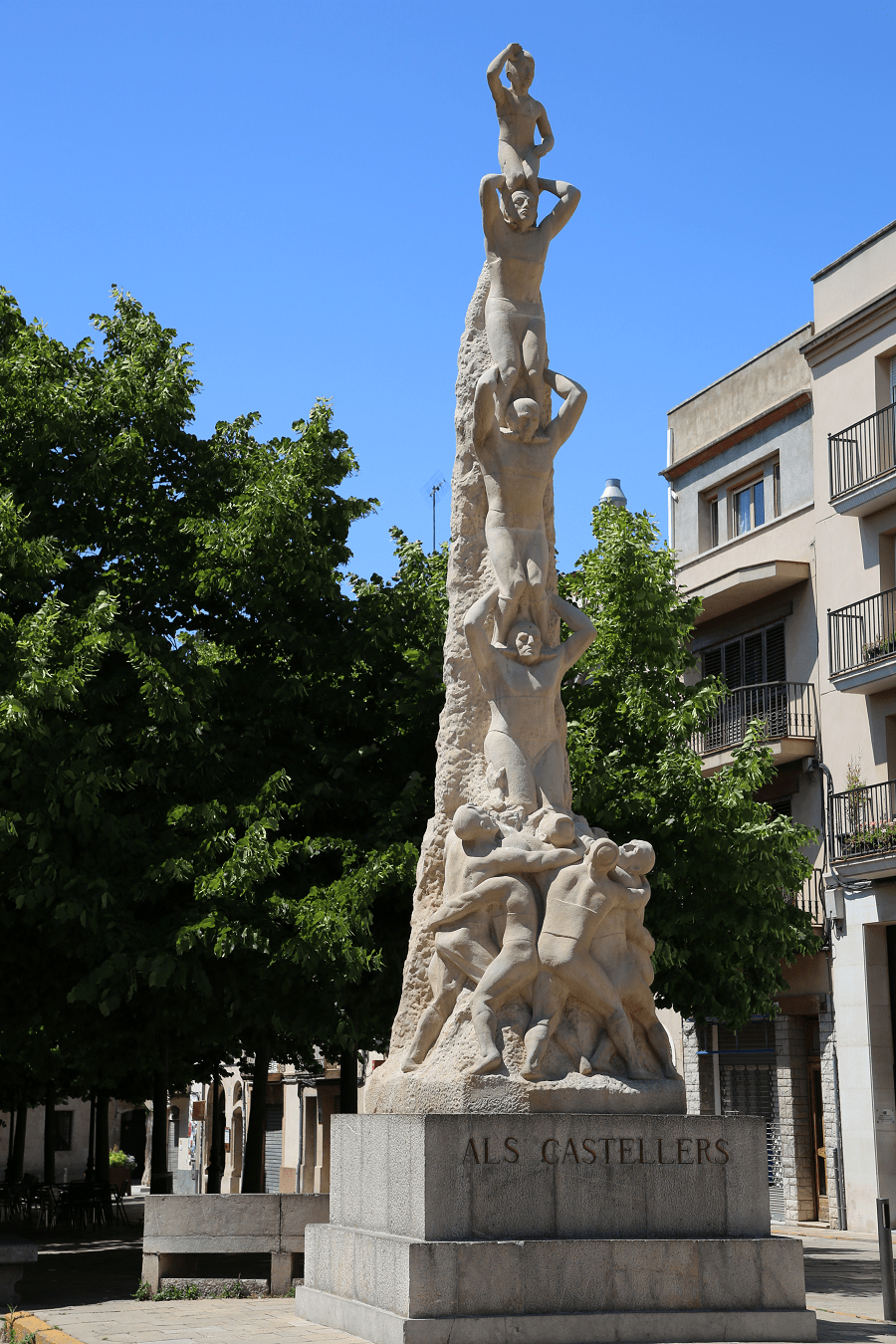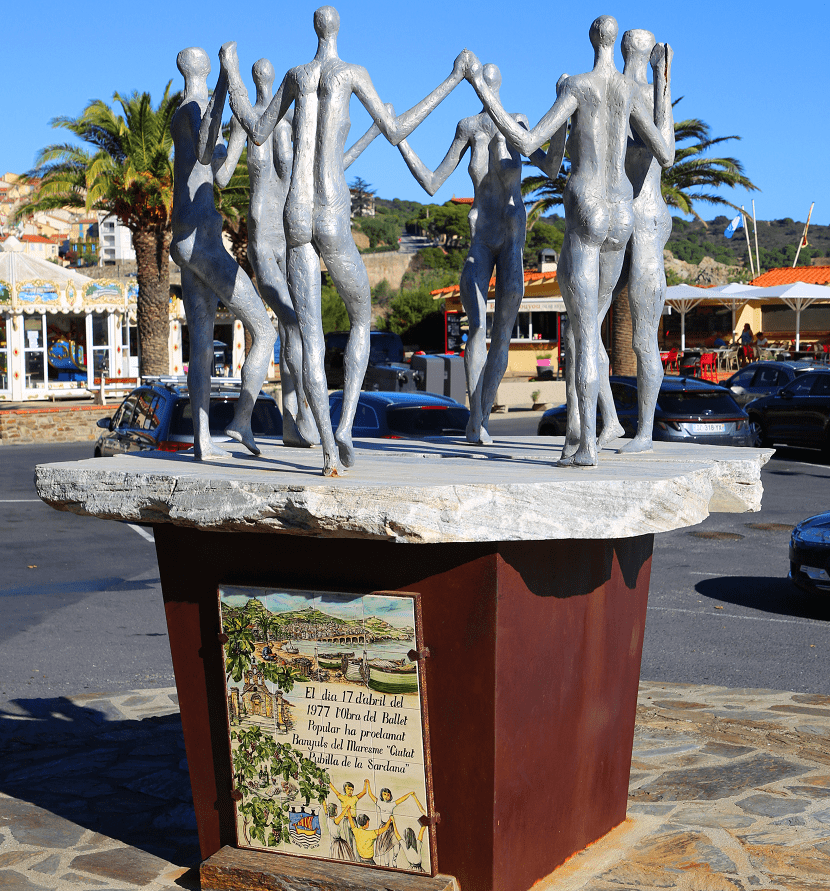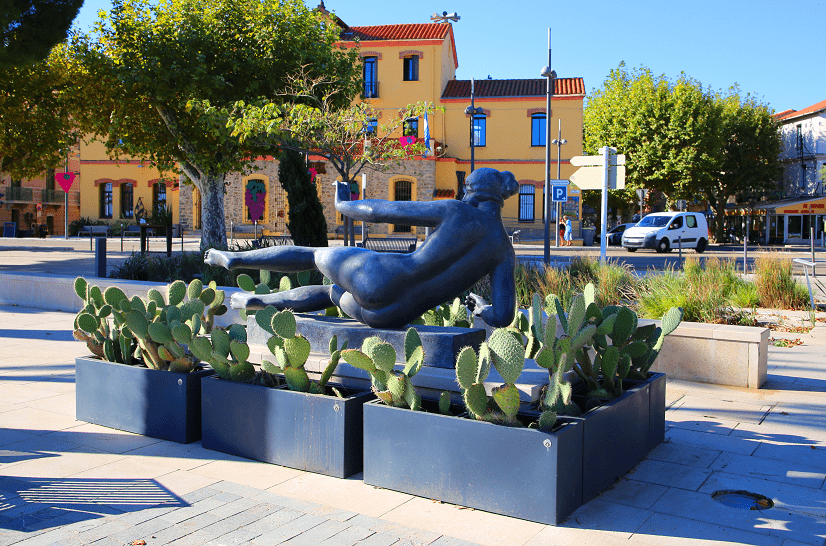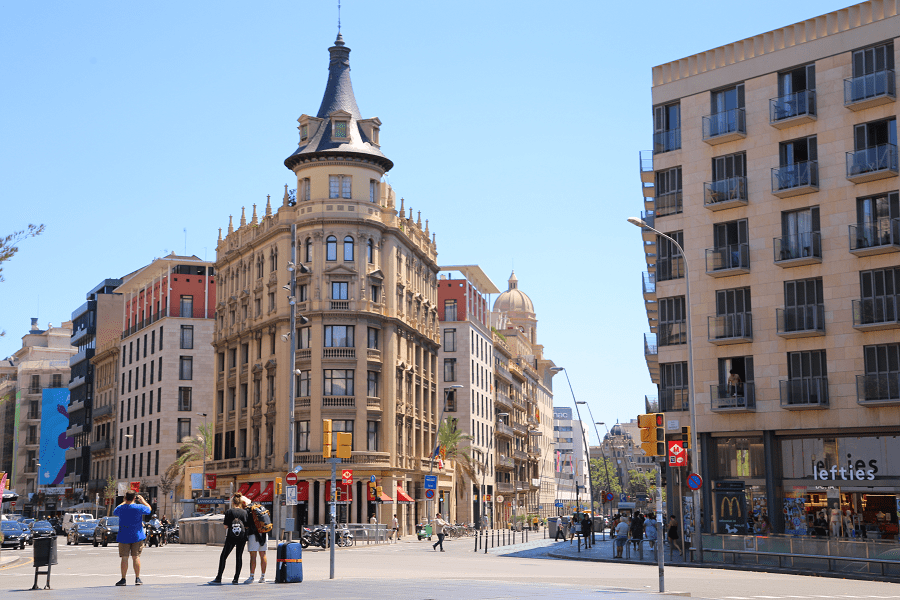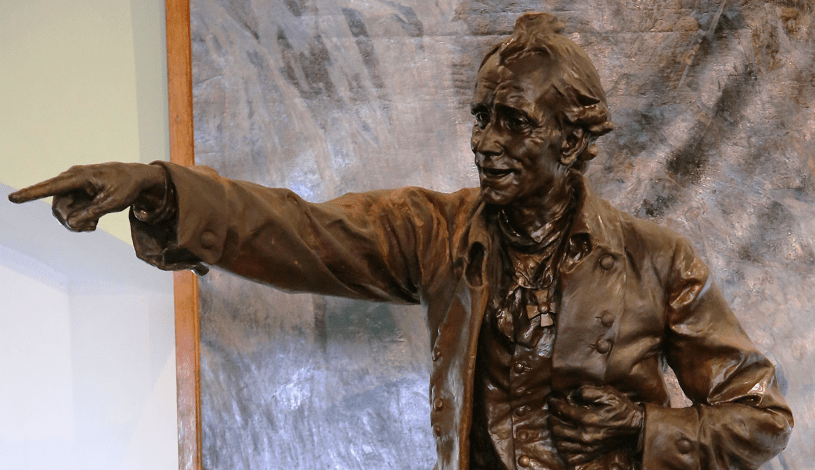«Catalan literature. Andorra: History and the modern days»
Albert Villaro, professor of Catalan literature, lecturer at the University of Andorra, writer, awarded of the literature prize Bertran 2015:
“The 18th century is the period when the written literature of Andorra was born. However, Andorra was mentioned in literature for the first time long before, viz. – in 1285, by one of the French counts-troubadours, Count Roger Bernat III of Foix. (Comte de Foix ). During the next century Andorra was praised by Gaston III de Foix, Gaston Phoebus (lived 1343-1391). In 2007 a book about him entitled «Gaston Pheobus: the prince and the devil» («Gaston Pheobus: le prince et le diable») by the author Claudine Pailhes was published in Paris by the publishing house Perrin. Gaston Pheobus is also known as the author of «Se Canta» – the anthem of the Occitans – a French ethnic group that lives in southern France.
Modern Spanish authors also wrote about counts-troubadours. Among them is Martí Riquer and his book «Troubadours: literary history and texts» («Los trovadores: historia literaria y textos»), Barcelona: Planeta, 1975.
The year 1748 is commonly cited as the date of origin of Andorran literature. The first Andorran writer was a lawyer, Antoni Fiter i Rossell, who wrote a book «Manual Digest». This piece, as well as most of the following books, was written in Catalan – the official language of Andorra. Yet this book is not a work of fiction. Its genre is historiography, so it consists of tales of the Valleys, describes cultural and religious traditions, customs and some historical facts. «Manual Digest» is often called «The Bible of Andorra».
The original manuscript is housed in Ordino, where the author of the book was from. Two copies of this book exist. One of them is kept in the Museum of the Parliament of Andorra’s Casa de la Vall, the second one – in the bishopric of the Spanish city of La Seu d’Urgell. (This is just across the Andorran/Spanish border and the seat of Andorra’s Episcopal Co-Prince).
In 1763 the second book in the historiography genre was published by an Andorran writer. It was «Politar Аndorrà» by Antoni Puig. The book tells about the privileges and the powers of the Andorran government.
Both books perfectly complement each other showing that Andorra was not completely isolated from Europe in the 18th century.
The next Andorran writer-historian was Pierre-Roch de Roussillou. He depicted the simple way of life of Andorran citizens in his book “De l’Andorre”, written in 1823. In this book Andorra was shown as a country that was free of the vices and filth found in other European countries, even though it was partially isolated. In the writer’s opinion, being a bit “lost” was the secret of Andorra’s modesty and virtue. The inhabitants of this country still lived the same way as their ancestors had lived 500 years before. The author wrote «Nothing has changed since those days. Even articles of luxury, as a part of modern civilization, are more likely to arouse fear in Andorrans than desire».
Another historiographic book was written in the same century, in 1838 to be precise. The title of the book was «Relació sobre la vall d’Andorra» and the author – Tomàs Junoy – was a monk from Anyos village. This book reminds one of a small encyclopedia that collected together information about citizens, mineral resources, agriculture and industry as well as custom regulations in the Principality.
Present Andorran theorists of literature think that the first signs of romanticism hide beneath its objective narrative. I also think that this book is an antecedent of the romantic fiction of Andorra. Later, we will find elements of romanticism in Lluís Ignasi i Fiter’s books. In 1874, he wrote «The story and life of the Holy Mother Meritxell» («Història i novena de Nostra Senyora de Meritxell») about the principal patroness of Andorra. Despite the main plot of the book, as stated in its title, the author also tells about the river Valira, about the Pyrenees Mountains covered with green grass, about lakes, spring leaves, ice and snow and about loneliness that is full of melancholy and sadness.
Later, the place of historiography and romanticism was occupied by “travel notes” written by foreign travelers. One of the first writers who mentioned Andorra in his «Diary of travels in Catalonia» («Diario de los viajes hechos en Cataluña») was a Spanish lawyer Francisco Zamora. In 1851, Henri Castillon d’Aspet wrote down the story of the Valley of Andorra in his book «Histoire d’Ax et de la Vallée d’Andorre». The book consists not only of picturesque sketches, but also contains a chemical analyses of the thermal waters, a description of its use in therapeutic treatment and also information about the origin of the thermal springs and their medicinal properties.
The next author is Louis Boucoiran who wrote a historical guide «Ariege, Andorra and Catalonia» in 1854 (the full title of the book in French is «Ariège, Andorre et Catalogne: Guide historique, pittoresque et descriptif aux Bains d’Ussat et d’Ax contenant l’Historie de l’ancien pays de Foix et des ses Comtes jusqu’à Henri IV et Historie de la vallée d’Andorre jusqu’à nos jours»).
In 1856 a man from England, Fredrick Harold Deverell, published «Border lands of Spain and France: with an account of a visit to the Republic of Andorra». The book was published in London.
In 1866 Victorin Vidal wrote a book «Andorra» («L’Andorre»). In 1888 Gaston Vuiller wrote «The valley of Andorra» («Le val d’Andorre»). Both books were published in Paris.
Among other writers and books in the “travel notes” genre, we might name a book by Xavier Campillo «A visit to the republic of Andorra» («Una visita a la república d’Andorra», 1856). It was translated into English in 1994 and republished in 2011. There is a copy of this book in the British Library (London). It also could be interesting to read the book «Maps of Andorra: an impression of a tour in the valley of Andorra» by Josep Aladern.
In 1901 one of the most prominent representatives of the Silver Age of Russian poetry, poet and painter Maximilian Voloshin, visited Andorra. His book should be quoted:
I’ve entered the library of St. Genevieve
«Give me something about Andorra».
– I am sorry?
– About Andorra …
– Est-ce que cela se mange? (Is it something to eat?)
«No. It is a country under the protectorate of France».
– In Central Africa?
– No, in the Pyrenees…
– C’est èpatant!!! (It’s incredible!!!)
The librarian looked at me with distrust and just to make an impression checked in some big book:
–No, we have nothing…
Here is his first impression of Andorra: «What a strange feeling – the air is cold, but the sunshine is sizzling. My head is clear, but all my body feels broken. I am climbing higher and looking around. France is behind me. We have come from there: the black chasm surrounded by the ring of dead, absolutely black tiered peaks that hide the horizon. There is snow in some parts. In front, the valley goes down sharply and curves towards the south. There, at the point where the valley curves, trees and forests are seen. But it is very far down. Closer – the scarp slope and green hillsides. It is Andorra».
I know that, in honor of the 20th anniversary of diplomatic relations between Russia and Andorra, there is a plan to publish a book with a collection of stories about the Principality by Russian writers living in Andorra in 2016.
It is worth mentioning, apart from the above, one of the favorite genres of Andorran writers – legends and fairytales. Here authors write fictional stories, legends about Andorra and its habitants. For example, Manuel Anglada wrote «Pyreneans’ stories and fairytales» («Històries i relats pirinencs») (publ. Andorra La Vella, 1989) and Ricard Fiter wrote «The legends of Andorra. St Julia de Loria» («Les llegendes d’Andorra. Sant Julià de Lòria») in 1966 or a book «New legends» («Nou llegendes») (pub. Andorra La Vella, 2011) which was published under the name of Carli Bastida (redundant. It already says 2011 and it also sounds wrong at the end of the sentence).
Two books about the White Lady were written by Roger Mas «The legend about the White Lady» («Llegenda de la dama blanca») (publ. Andorra La Vella, 1986) and Pere Canturri «The White Lady» («La dama blanca») (publ. Andorra La Vella: Center of the Catalan Culture, 1996). Roger Mas is also the author of the book «The legend about the witch from Engolasters » («Llegenda de les bruixes d’Engolasters») (publ. Andorra La Vella, 1987).
The book by Rosalia Pantebre came out in Andorra in 2004 – «Once upon a time in the Pyrenees. Stories about the distant past» («Per temps vell, al Pirineu. Històries de l’antigor»). In 2010 Àlvar Valls and Roser Carol published the book called «Andorra’s legends (Lores and stories)» («Per temps vell, al Pirineu. Històries de l’antigor») in Barcelona.
Among books in this genre must also be recalled the book by Albert Puigoriol «Andorra, my country» («Andorra, el meu país») that was republished in 2003. Books by Eva Julian and Carme Oriol also should be mentioned – « Heritors and Younger Sons» («Hereus i cabalers») (publ. Andorra La Vella, 1997) and «Study of the Andorran folklore in context of the book «The war between Andorra and United States» («Estudi del folklore andorrà en el seu context «La guerra d’Andorra amb els Estats Units»), resp. The last book was published in Barcelona in 1997.
The period of modern Andorran literature started in 1980s. A noticeable evolution of the literature happened when the Constitution of Andorra was adopted in 1993. Since then the government of the Principality actively stimulates development of Andorran literature by organizing regular competitions and giving awards for the best written pieces as part of the school curriculum and among adult authors who write in the Catalan language.
Novels about Andorra also deserve focused attention. The first novel in which Andorra was mentioned was «Andorra or the brazen men» («Andorre ou les hommes d’airain»). It was released in 1923. The author of the book is Isabelle Sandy. Here is a short piece from the book: “The inhabitants of Canillo were buried under the snow for five long months. Men –smugglers or mule riders and carriers. Women… They have big eyes that are not so much beautiful as eloquent. They live and work without the slightest sign of weakness…”. The novel was published in Paris (París: Librairie Plon).
In 1967 Ricard Fiter wrote: «In one remote Andorran village. Sant Julia de Loria» («Un andorrà lluny del poble. Sant Julià de Lòria»). The book was published in Andorra.
Nowadays, most of the prosaists write about Andorra in the form of historical novels. Contemporary theorists of literature name works by Albert Salvadó “extraordinary case”; works by the author who “vitalized the historical novel in the Catalan language”. This Andorran author (born 1951) writes short novels for children, essays and novels usually focusing on historical facts. The trilogy «The shadow of Ali Bei: cursed Catalans, cursed Muslims, cursed Christians» («l’Ombra d’Alí Bei: maleït català, maleït musulmà, maleït cristià») is among his works. It was released in Barcelona by the publishing house Columna in 2004. It was published in two languages – Catalan and Spanish.
The first of Albert Salvado’s books «The secret of Constantine the Great» («L’enigma de Constantí el Gran») (publ. house Columna) was written in 1997. Then he released books every year «The teacher of Cheops» («El mestre de Keops») in 1998, «The Attila’s ring. A story of a princess» («L’anell d’Àtila. Història d’una princesa») in 1999. In the single year of 2000 four books came out: «Jaume I the Conqueror. The saracen dagger» («Jaume I el Conqueridor. El punyal del sarraí»), «Jaume I the Сonqueror. The Hungarian Queen» («Jaume I el Conqueridor. La reina hongaresa»), «Jaume I the Сonqueror. Speak or kill me» («Jaume I el Conqueridor Parleu o mateu-me»), «Rapture, death and the Marseillaise» («El rapte, la mort i el marsellès»).
Among his other books are «The history of Gunter Psarris» («El relat de Günter Psarris»), publ. Barcelona: Edicions 62, 2001; «The Devil’s eye» («L’ull del diable»), Barcelona Planeta, 2001; «A vote for hope» («Un vot per l’esperança»), Barcelona: Rosa dels Vents, 2002, « Hannibal’s eyes» («Еls ulls d’Anníbal»), Barcelona: Columna: Proa, 2002; « Amon’s great concubine» («La gran concubina d’Amon»), Barcelona: Columna, 2005; «The Phaeton’s report» («L’informe Phaeton»), Barcelona: Columna, 2007; «Life in a game» («Una vida en joc»), Barcelona: Columna, 2010 and «Open your eyes and wake up» («Obre els ulls i desperta»), Barcelona: Meteora, 2011.
If you’ll forgive me I will also include a short review of my own works. In 2001 my book «Deaf Souls (?)» («Les ànimes sordes») was published in Barcelona. In 2003 two of my books were released – «In the shadow» («Obaga») and «The year of the franc» («L’Any dels francs»). In 2006 the novel «Prussian blue» («Blau de Prússia») was published, in 2009 – the novel «The first practice» («La primera pràctica»). The novel «The scale of pain» («L’escala del dolor») came out in 2011, the novel «The Ambassadors» («Els ambaixadors») in 2014. In the same year my book «The moral forest 2.0 Andorra la Vella » («La selva moral 2.0. Andorra la Vella») was republished in Andorra (it was published previously in Barcelona in 1993). One of my latest works is «The Bible of Andorra» («La bíblia andorrana»). It was published by the publishing house Columna in Barcelona in 2016.
Special mention should be made of the field of poetic literature. Most of the following poems were written and published in Andorra. The first book of poems «33 poems» («33 poems») by Andorran writer Josep Dallers was published in 1974. His next poem «Awakening» («Despertar») was published in 1976. In 1987 the poet wrote the piece «Friend» («Amic»), in 1988 – «Tear-filled eyes» («Ulls d’aigua»), in 1990 – «Face to face» («De tu a tu»), in 1995 – «Illalba».
In the year 1987 two books by Andorran poets came out: Joan Puig Salarich’s «Poetic geography of Andorra» («Geografia poètica d’Andorra») and Natàlia Sola’s «Intense white/s and yellow/s» («Intensament blancs i grocs»).
In 1994 a newspaper, Diari d’Andorra, published poems by Robert Pastor – «You will never go back to Ithaca, Ulysses» («Mai no tornaràs a Ítaca, Ulisses»). In 2000 Manel Gilbert wrote two poems: «Rain» («Pluja») and «Between the water and the stone» («Entre l’aigua i la pedra»). In 2003 one more poem by Robert Pastor came out – «Arans’ book» («Quadern d’Arans»).
In 2002 Joan Reguant wrote «Sealed land» («Terra segellada»). The same year Teresa Colom published a poem «The temperature of lips» («La temperatura d’uns llavis»). In 2003 the poetess wrote the poem « Like the months of June» («Com mesos de juny»). The rest of her books, four to be exact, were published in Spain: « Elegies finally known» («Elegies del final conegut») in 2005, «Where everything is glass» («On tot és vidre») in 2009, «My mother asked for death» («La meva mare es preguntava per la mort») in 2012 and «Miss Keaton and other animals» («La senyoreta Keaton i altres bèsties») in 2015.
In 2006 Andorran poetess Ester Fenoll wrote a piece «Perfect breakfast» («Esmorzar perfecte»). In 2010 the third book by Manel Gilbert « Blues adrift» («Blaus a la deriva») was released. The book «I appreciate your love, but I have other plans» («Agradezco tu amor, pero tengo otros planes») by Ester Fenol came out in 2011 and before, in 2008, her book «Early October7Waiting for October» («Anticipant octubre») was published in Tarragona.
Andorran literature is also recognises the essay as a genre. Antoni Morell wrote a first essay about the literature of Andorra – «Andorra and literature» («Andorra i la literatura») for Serra d’Or magazine (#434, February). In 2006 a publishing house, Publicacions de l’Abadia de Montserrat (Barcelona), as a part of «Pyrenees, Catalonia and Andorra. Works of the Third International Colloquium of the French and Andorran association» («Els Pirineus, Catalunya i Andorra. Actes del Tercer Col•loqui Internacional de l’Associació Francesa de Catalanística») published an essay by Helena Alonso entitled «The Pyrenees as a literary space: beyond mystifications and legends» («El Pirineu com a espai literari: més enllà de la mitificació i la llegenda») and Àlvar Valls’ «Taking a closer look at the literature of Andorra » («Aproximació al fet literari a Andorra»).
As for today, the work «Literary models of the Principality of Andorra» («Models literaris de país al Principat d’Andorra»), written by Josep Carles Lainez in 2015, has concludes the series of essays.
Contemporary Andorran theorists of literature also name one more genre –“Memoirs and biographies”. Books, by authors who work in this genre, were published in both Andorra and Spain.
One of the first Andorrans who worked in the named genre was Bonaventura Adellach with his book «By the rocky ways of politicians» («Pels camins pedregosos de la política»). The book was published in 1979. Ten years later, Esteve Albert wrote a long-titled book «Don Guillem d’Areny and d’ Plandolit, baron of Senaller and Gramenet, highly nobel Sr. Ombudsman of the Valleys of Andorra» («Don Guillem d’Areny i de Plandolit, baró de Senaller i de Gramenet, Molt Il•lustre Sr. Síndic de les Valls d’Andorra»). It covers the period from 19.02.1822 until 23.02.1876 of one of the oldest and most honored Andorran families.
In 2000, the newspaper Diari d’Andorra published «A Doctor’s memoirs» («Memòries d’un metge») by Albert Pla. One year later, Antoni Pintat’s book «Memories of Antoni Pintat Argelich: <<A rough path>> («Memòries d’Antoni Pintat Argelich: camí de bast») came out. The book by Ricard Poy «The challenge. Memories of a Head of Government of Andorra» («El repte. Records d’un cap de Govern d’Andorra») was published in 2002. It is also worth mentioning José Bazan and his book «I am a child of the war» («Jo, un nen de la guerra») which was published in Andorra La Vella in 2008 as well as co-authors of the book «Some possible memories of Doctor Molines, 1893-1955» («Unes memòries possibles del doctor Molines, 1893-1955»)– Ricard Poy and myself. It was published in 2012. Teresa Cairat’s book « Síndic Cairat, my father» («El síndic Cairat, el meu padrí»), 2015, finishes the list of Andorran writers.
The rest of the books were published in Spain. For example, «Memories of a vicar general of La Seu d’Urgell, permanent representative in Andorra» («Memòries d’un vicari general de La Seu d’Urgell, delegat permanent per a Andorra») was published by a publishing house, Publicacions de l’Abadia de Montserrat in Barcelona, in 1998. The author was – Gregori Creus. I also would like to mention the book by Francesc Badia – «Co-prince of the world. Justí Guitart and his time: the history of Andorra and Spain and the relations between the two countries during troubled times» («El copríncep mons. Justí Guitart i el seu temps: la història d’Andorra i Espanya i les relacions entre els dos països en temps turbulents»).
«Political memoirs of Josep Cassany i Grau» («Memòries polítiques del senyor Josep Cassany i Grau») by Josep Cassany was published in Leida in 1989. In 1992, Jesús Pallares i Bach wrote the book «Wooden box 1763-1992» («Fusta de boix, 1763-1992»).
«Black’s secrets: the most wanted smuggler. of Andorra» («Confidències del Negre: el contrabandista més perseguit d’Andorra») was written by co-authors Teresa Blanco and Carles Castro and published in 2006. In 2009, Fèlix Canet‘s «The other face of the Moon: stories by a survivor» («L’altra cara de la lluna: història d’un supervivent») was released.
The last book in this list for now is the book «Retired in due time» («Retirat als quaranta») by Jordi Capdevila published in La Seu d’Urgel in 2015.
In conclusion, I would like to name a few works that I would unite in one group “Expats and imaginary Andorra”.
Well, two books were published in USA. One of them is «The Land of Right Up and Down» by Eva-Louis Wuorio published in Cleveland in 1964, the other one is «Andorra» by Peter Cameron published in New York: Jacques Farrar, Straus & Giroux, 1994.
In 1961 Shirley Deane published her book «The Road to Andorra» in London.
Books about Andorra also were published in Hong Kong (publ. house Proverse, 2011) – «Death Has a Thousand Doors» by Patricia W Grey; in Dublin (publ. house Penguin, 2008) – «Mr S and the Secrets of Andorra’s Box» by Ross O’Carrol.
And lastly, two books were released in Andorra with 20 years between them: Jacques-Fromental Halevy’s and Jules-Henri Vernoy’s «The valley of Andorra» («Le val d’Andorre») (publ. Andorra La Vella, Premsa Andorrana, 1996) and «Andorra Revealed: An Anthology» by Autors Diversos (publ. Andorra La Vella, 2016).
He might be interested to include the anthology «Andorra: Festivals, Traditions and Folklore» published in 1998 by the Andorra Writer’s Circle. There is also the novel «Frontera endins» by Josep Enric Dallerès first published in 2007 which spans the whole of the 20th century telling the history of Andorra through the vehicle of a fictional man’s life.
Literature of the world. Andorra. Bibliography.
Bibliography “Travel notes”
Ballantine, Hepburn. “A Crusade into Catalonia“, 1894. London: Young, 1913. [Translated from Catalan: “Una croada als Pirineus“, 1894). Tremp: Garsineu, 1993]
Deverell, Frederick Harold “All round Spain by Road and Rail, with a short account of a visit to Andorra”. London: Sampson Low, Marston Serale & Rivington, 1884.
Freeston, Charles L. “Els passos dels Pirineus” – “The Passes of the Pyrenees”. Andorra, 1911. Andorra La Vella: The Government of Andorra, Ministry of international affairs, 2009.
Leary, Lewis Gaston. “Andorra, the Hidden Republic. Its Origin and Institutions, and the Record of a Journey Thither”, New York: McBride, Nast and Co., 1877.
Taylor, Bayard. “La república dels Pirineus”, Андорра 1867 – “The Republic of the Pyrenees”: Andorra 1867. Andorra La Vella: The Government of Andorra, Ministry of international affairs, 2002.
Avilés, Juan “El Pallas, Aran and Andorra: memories and impressions from a journey” (“El Pallás, Arán y Andorra: recuerdos é impresiones de viaje). Barcelona: Imprenta el Universo, 1892. [Tremp: Garsineu, 1993]
Ferreira de Castro, José Maria “Small worlds and ancient civilizations” (“Petits mons i velles civilitzacions“– Pequenos mundos, velhas civilizações). The Government of Andorra, Ministry of international affairs, 2009.
Aladern, Josep. “Maps of Andorra: impressions ofan excursion in the valley of Andorra” (“Cartes andorranes: impresións a la lleugera d’una excursió per les valls d’Andorra”). Реус, 1892.
Alcover, Antoni Maria. “Travel notes by a philologist” (“Dietari de l’excursió filològica”), 1906. Edició de M. Pilar Perea. Barcelona: Proa, 2006.
Armet i Ricart, Salvador. “The valleys of Andorra. First part: from the Segre to the Ariège through Andorra” (“Les valls d’Andorra. Primera part: del Segre a l’Ariège a travers d’Andorra”). Barcelona: L’Avenç, 1906.
Osona, Artur: “The Republic of Andorra” (“La república d’Andorra“). The book consists of 42 chapters with geographic and historical narrative about the valley. Barcelona. The excursion center of Catalonia, 1986.
Verdaguer, Jacint Canigó. “Excursions and voyages” (“Excursions i viatges”). Barcelona: Llibreria Catòlica, 1886. — Ed. a cura de Narcís Garolera. Barcelona: Barcino, 1991-1992. 3 v.
Pla, Josep. “Andorra, in the year 1943” (“Andorra l’any 1943″). A: De l’Empordanet a Andorra. Barcelona: Destino, 1959.
Bibliography“Novels of Andorra”
Morell, Antoni. “Seven litanies of death” (“Set lletanies de mort”), Barcelona: Laia, 1981.
“Boris I, the king of Andorra” (Borís I, rei d’Andorra), Barcelona: La Magrana, 1984.
“On the edges of dawn” (“Als límits de l’alba”), Andorra: Grafinter, 1987.
“Seven litanies and one other” (“Set lletanies i una altra”). La Seu d’Urgell: Tram3s, 1990.
“Karen, child of the light” (“Karen, nena de la llum“), Terrassa: Material d’Edició, 1996.
“The snow effect” (“La neu adversa“), Barcelona: Proa, 1999.
Dalleres, Josep: “Inner frontier” (“Frontera endins“), Encamp: Anm Editors, 2007.
Peruga, Joan.”Last summer in Ordino” (“Últim estiu a Ordino“), Barcelona: Columna, 1998.
“The invisible republic” (“La república invisible”), Barcelona: Proa, 2004.
“Museum of the elephant” (“El museu de l’elefant”), Andorra: Editorial Andorra, 2013.
Burgués, Pilar. “White colored flashes” (“Flaixos de llum blanca”). Andorra La Vella: Editorial Andorra, 2015.
Gálvez Casellas, David. “Dead cards” (“Cartes mortes“). Barcelona: Males Herbes, 2014.
“Nothing is real” (“Res no és real”). Barcelona: Males Herbes, 2015.
Rubio, Iñaki. Trencadís. “The last book by Frederic Picabia” (“L’últim llibre de Frederic Picabia”). Andorra La Vella: Editorial Andorra, 2011.
“The other side of the mirror” (“L’altre costat del mirall”). Lleida: Pagès, 2014.
Grebbenikova, Alexandra. “Bicycles shouldn’t be eaten” (“Les bicicletes no es mengen“). Ontinyent: El Toll, 2014.



